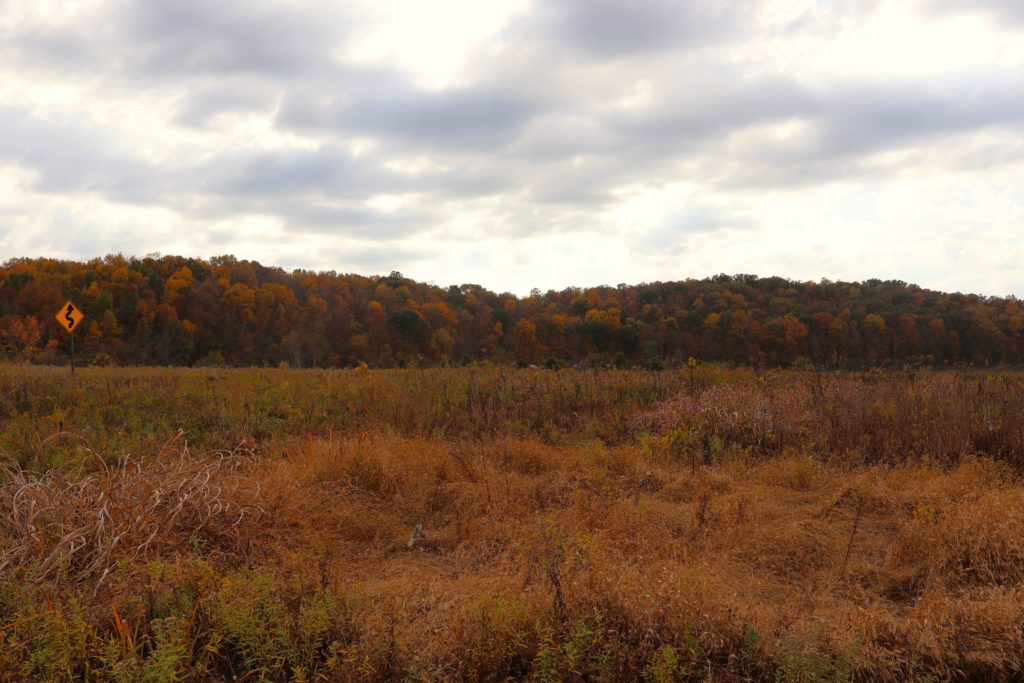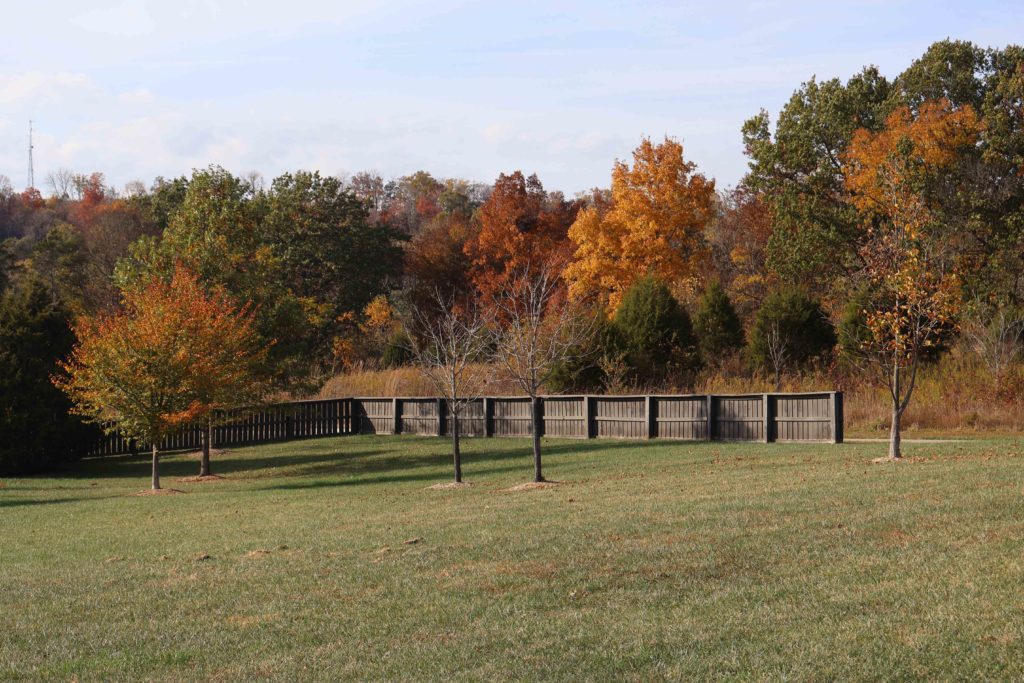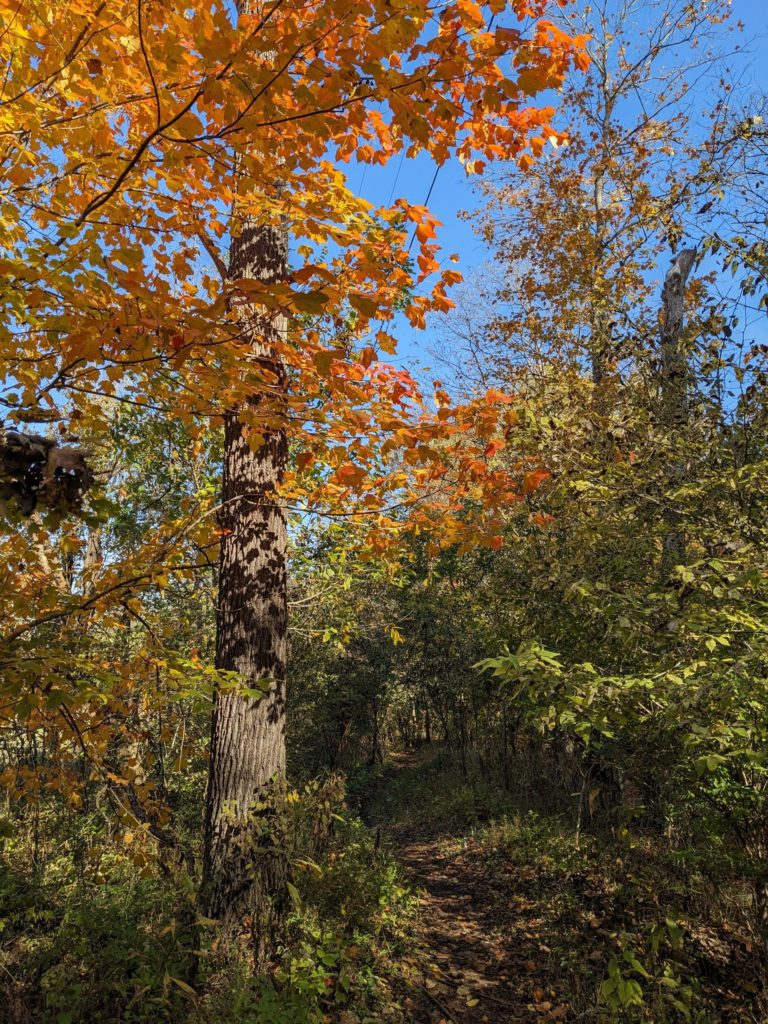What does fall mean to The Parklands?
Fall has fully settled into The Parklands. The trees bring pops of red, orange, and yellow to the typically green space. If you ask our staff members about this season, what it means to them, and what it entails, you’ll get a different answer depending on which department you chat with. Our horticulture team sees the falling leaves and loves the share the why and how of fall colors, but if you talk to our education team, you may get an explanation of what it means for our friends who call the forest home. Fall is a stunning season in The Parklands, and two of our staff members have taken a moment out of their day to give you their perspective on it.
Why do leaves fall?
Kayla Franck, Head Gardener
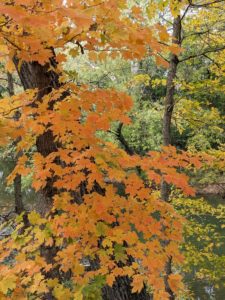
Have you ever wondered why the leaves change color when the fall season arrives? The transition of green to shades of red, yellow, orange, and even purple is due to the slowed production of chlorophyll caused by the lessening daylight and cooler temperatures as we get closer to the winter season. Chlorophyll production eventually stops and once completely worn off in the leaf, other biochemicals contained within the foliage will present as the spectrum of fall colors we’re used to depending on the plant species makeup. The chemicals responsible for shades of yellow are called carotenoids. Red comes from anthocyanins. Tannins in addition to those compounds exist in different ratios from tree to tree resulting in all the different colors and shades we see.
Moisture can also play a role in what colors we see in our forests during fall as well. Unfortunately, this October we find ourselves in a moderate drought. Your horticulture and natural areas team is predicting only an average show of color this year and potentially a little bit of early leaf dropping before full color appears.
But don’t worry! Despite the dry spell, we assure you there will still be plenty of beautiful, colorful vistas all around you in the Parklands for all the “leaf peepers” out there!
I recommend a walk around the Egg Lawn path, which showcases many different species of trees grouped together by type all the way around the paved, one kilometer path. This is a great walk to see lots of different trees changing into their fall colors.
Another colorful option would be to visit the Grand Allee Area where, earlier this spring, we installed a new planting of maples. They are a cultivar called “Fall Fiesta” named for their extremely vibrant fall color in the red to yellow spectrum. Though they are young, and smaller in size, we expect them to put on growth and provide a spectacular color show especially in years to come! If you continue across the wetland boardwalk, you’ll find an isle of Black Tupelo trees that change to an intense, fiery red color as well.
If immersion into a more woodsy atmosphere is more your style, I recommend a trip to the Woodland Garden. This is where you may see one of the more elusive fall colors, purple. There is a small grove of Lanham’s Purple sumac trees at a path intersection between the Glade and Glen gardens. This is one of my favorite sights in fall and I recommend a walk through the garden here around sunset or sunrise, while the light is coming from a more extreme angle from the horizon, it is diffused by the atmosphere, yielding a warm, rosy gold illuminated forest. It makes all the color you see in this area an extra special treat.
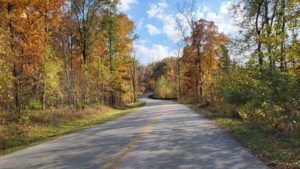
You can’t go wrong with a drive through our park roads either. There are many locations where you will drive through mature woods with closer views of trees showing off their colors as you cruise below their canopy. As you continue down the road, these wooded areas open up to grand views of hillsides painted with all the colors of our Kentucky woods. Think of the drive from Limestone Gorge to the open view of the Lowland Plain. You’ll pass by stunning views of Big Vista and the Woodland Garden on your way down toward Cliffside center. Additionally, traveling from Boulder Pond down the curved hill with the wide-open view of Seaton Valley. Ah! What a sight!
This is a fantastic time to visit and see the magic of fall in the parklands. We hope to see you out enjoying the cooler weather while leaf peeping this season!
What happens after they fall?`
Erin Kinnetz, Assistant Director of Education
Fall foliage in our Eastern deciduous forests can have some of the most beautiful colors and sights worldwide. Our trees vie for the best dressed and it reminds us to slow down and take advantage of the moment rather than following our scheduled plans. For our animals, colorful falling leaves signal the oncoming winter, and those leaves are a valuable resource. Whether they call the forest or the water home, animals across The Parklands find many uses for these leaves after they float to the ground as winter marches steadily closer.
If you watch closely, you will see the frenetic activity of the chipmunks and squirrels as they stash away food for winter. You’ll also see those same rodents with their mouth full of precious leaves that they arrange in their homes for insulation. While squirrels often build nests high up in trees and chipmunks burrow deep into the ground for winter, these additional leaves add that extra layer of warmth to keep them cozy and protected all winter long.
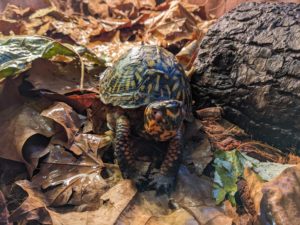 This time of year you might come across, our cold-blooded animals like box turtles and ring-necked snakes playfully burying themselves in dense piles of leaves as practice for finding a haven to brumate during the winter. Since they cannot generate their own body heat, leaves are often an important tool to our cold-blooded friends as a source of protection from the cold and a tool to regulate their body temperature. All around us, our silk moths are carefully choosing the best leaf to use as a sleeping bag around their cocoon all winter to keep them warm and protected as they turn from caterpillars to beautiful moths.
This time of year you might come across, our cold-blooded animals like box turtles and ring-necked snakes playfully burying themselves in dense piles of leaves as practice for finding a haven to brumate during the winter. Since they cannot generate their own body heat, leaves are often an important tool to our cold-blooded friends as a source of protection from the cold and a tool to regulate their body temperature. All around us, our silk moths are carefully choosing the best leaf to use as a sleeping bag around their cocoon all winter to keep them warm and protected as they turn from caterpillars to beautiful moths.
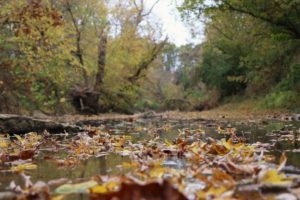
For our aquatic animals, the fall foliage dumping into the creek is the most celebrated time of year because it signals a feast! On land, the bottom of the food web is the living trees and plants themselves. But for the insects, mussels, and crustaceans in the water, the fallen leaves are a necessary and important part of their ecosystem. These small aquatic creatures depend on the leaves in the fall for their food year-round, so their mass availability during this season is a dream come true. These small scavenging animals will in turn be the food for our larger fish, turtles and mammals that call Floyds Fork home.

